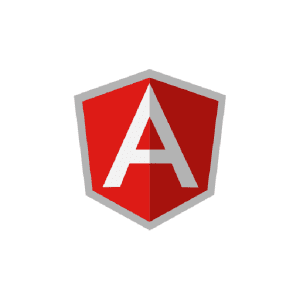CertAdda’s Artificial Intelligence Course is well researched amalgamation of Natural Language Processing and Deep Learning, specifically designed for professionals and beginners to meet the industry standards. This course gives you an in-depth understanding of Tokenization, Stemming, Lemmatization, POS tagging, Named Entity Recognition, Syntax Tree Parsing using Python’s NLTK package, CNN, RCNN, RNN, LSTM, RBM, and their implementation using TensorFlow 2.0 package. You will learn to build real-time projects on NLP and Deep Learning, to make you industry-ready and help you to kickstart your career in this domain.
The field of artificial intelligence (AI) is rapidly growing and is expected to continue growing in the coming years. AI is being used in many industries such as healthcare, finance, education, and more. With the increasing adoption of AI, there is a high demand for professionals with the necessary skills and knowledge to work in this field.
Here are some ways AI career growth is happening:
- Increased job opportunities: There is a growing demand for AI professionals in both technical and non-technical roles. Technical roles include AI engineers, data scientists, machine learning engineers, and software developers, while non-technical roles include AI project managers, AI consultants, and AI analysts.
- Advancements in technology: As AI technology advances, there are new opportunities for AI professionals to develop new applications and solutions that can solve complex problems.
- Emerging subfields: There are emerging subfields within AI, such as explainable AI, AI ethics, and AI security, which provide new opportunities for AI professionals to specialize and grow their careers.
- Continuous learning and development: AI is a constantly evolving field, and AI professionals must continuously learn and develop new skills to stay up-to-date with the latest advancements.
Overall, the field of AI provides many opportunities for career growth and development, and there is a high demand for skilled professionals in this field. Enroll in this Artificial Intelligence training today.
This Artificial Intelligence Course provides in-depth knowledge of concepts such as Natural Language Processing, Text Classification, Text Processing, Image Processing, Object Detection, Deep Learning, TensorFlow, OpenCV, and many more.
The Artificial Intelligence course is suitable for anyone who wants to stay up-to-date with the latest advances in AI and wants to build the skills needed to develop and deploy intelligent systems.
This course will be ideal for the following professionals.
- Freshers
- Python Developers
- Researchers
- Data Scientists
- Data Analysts
- Machine Learning Engineers
- NLP Engineers
- Software Testers
- Software Developers
If you are one of the above, then do not hesitate to talk to our assistant team and enroll in our AI Certification training today.
Artificial Intelligence (AI) is a broad field with many subfields, and the skills required for an AI engineer can vary depending on the specific area of expertise. However, there are some basic skills that most AI engineers should possess:
- Strong Programming Skills: AI engineers need to have a strong foundation in programming languages such as Python, C++, Java, or R. This includes knowledge of data structures, algorithms, and object-oriented programming.
- Machine Learning: AI engineers must have a solid understanding of the concepts and algorithms of machine learning. This includes knowledge of supervised and unsupervised learning, deep learning, and natural language processing (NLP).
- Data Structures and Algorithms: A deep understanding of data structures and algorithms is essential for designing and implementing efficient algorithms for large data sets. This also includes knowledge of big data technologies and distributed computing.
- Statistics and Probability: Knowledge of statistics and probability is essential for understanding and designing machine learning algorithms. AI engineers need to know concepts like hypothesis testing, regression analysis, and Bayesian networks.
- Problem Solving: AI engineers must have strong problem-solving skills to design and implement complex AI systems. They must be able to identify problems, break them down into smaller components, and develop solutions.
- Creativity: AI engineers must be creative thinkers to develop novel solutions to complex problems. They should be able to think outside the box and come up with innovative ideas.
- Ethics and Accountability: AI engineers must understand the ethical implications of their work and the impact it has on society. They must ensure their AI systems are transparent, explainable, and accountable.
Prior knowledge of Python and Machine Learning will be helpful but not at all mandatory. To refresh your skills in Python and ML, we will provide self-paced videos absolutely free as prerequisites in your LMS.
CertAdda’s Artificial Intelligence Course enables you to move ahead in your career by helping you get skilled with the fundamentals of AI. The course focuses on providing hands-on experience to make you ready for any AI related opportunity.
Learn the fundamentals of Natural Language Processing (NLP), sentiment analysis, language translation, text summarization, deep learning, convolutional neural networks, recurrent neural networks, and autoencoders. Additionally, you will be working with the OpenCV library, object detection, image segmentation, and image classification along with various real-life projects.
You will execute your Assignments/Case Studies using Python Jupyter Notebook/Google Colab. Detailed step-by-step installation guides are available on the LMS. In case you come across any doubt, the 24*7 support team will promptly assist you.







